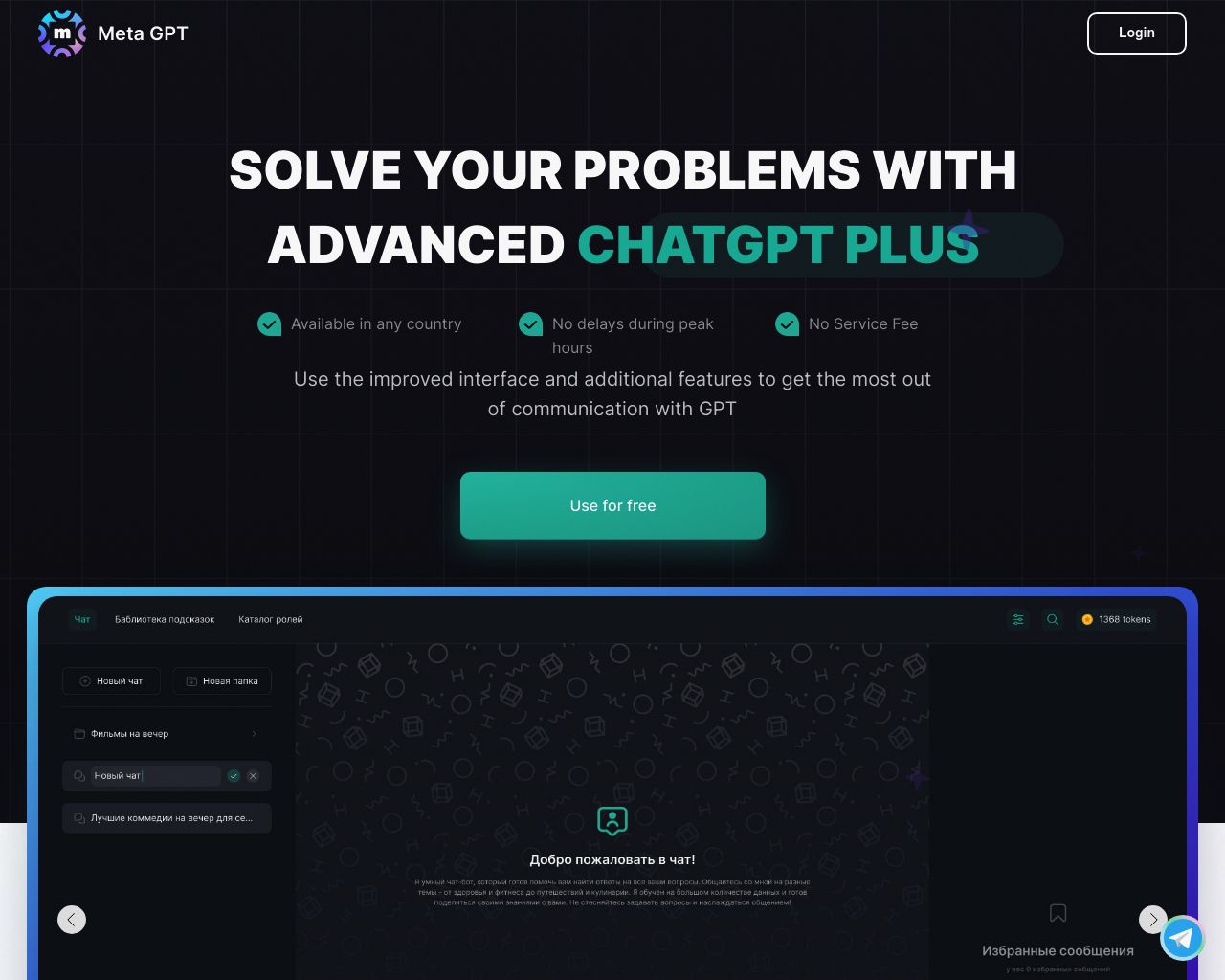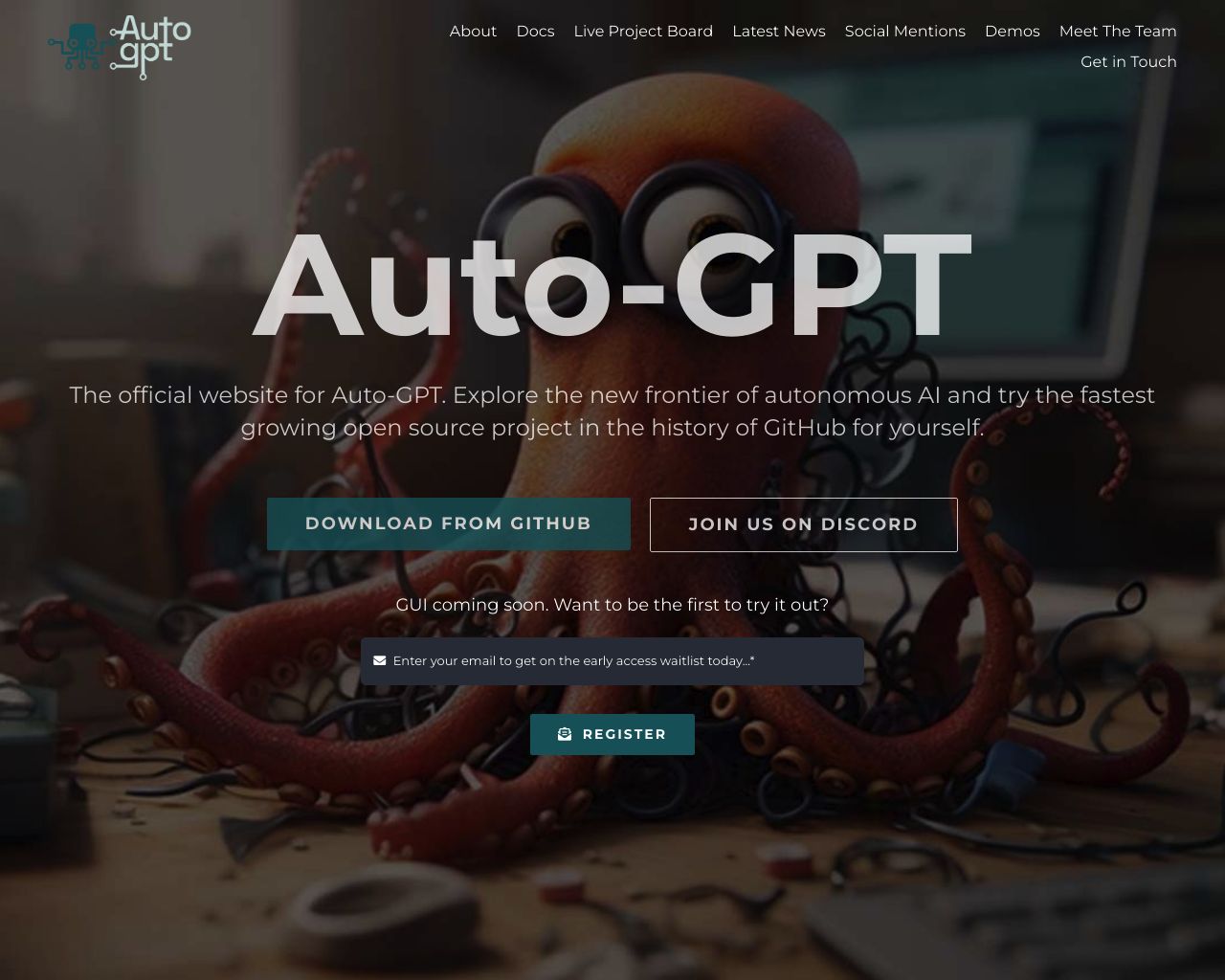AI agent builders MetaGPT and AutoGPT push the boundaries of autonomous task execution and multi-agent collaboration. MetaGPT’s structured approach mimics human workflows, assigning specialized roles to AI agents for complex project management. AutoGPT focuses on independent problem-solving, leveraging advanced language models to break down and tackle objectives without constant human input.
This comparison explores their unique strengths, potential applications, and limitations to help developers, business leaders, and AI enthusiasts make informed decisions about these cutting-edge tools. We’ll also introduce SmythOS, a platform that combines the best of both worlds while addressing key shortcomings, offering a more accessible and versatile solution for AI agent development.
MetaGPT Overview
MetaGPT revolutionizes multi-agent collaboration by combining human-like workflows with advanced AI models. This open-source framework assigns specialized roles to AI agents, mirroring a software development team’s structure to tackle complex tasks efficiently.
The platform’s core philosophy, “Code = SOP(Team),” integrates Standardized Operating Procedures (SOPs) into AI processes, enhancing output quality and reliability. MetaGPT excels at breaking down large projects into manageable subtasks, each handled by role-specific agents such as product managers, architects, and engineers.
MetaGPT revolutionizes multi-agent collaboration by combining human-like workflows with advanced AI models. This open-source framework assigns specialized roles to AI agents…
MetaGPT generates comprehensive artifacts throughout the development cycle, including requirement documents, design specs, and flowcharts. This approach not only improves code quality but also facilitates clearer human-AI collaboration. The framework’s ability to produce detailed documentation sets it apart, offering transparency and easing the review process for human team members.

Developers benefit from MetaGPT’s robust integration capabilities, supporting various APIs and tools like Docker for flexible deployment. The platform leverages foundation models and Hugging Face resources, expanding its AI capabilities. While MetaGPT offers powerful collaboration features, it lacks a visual builder or no-code options, potentially limiting accessibility for non-technical users.
MetaGPT generates comprehensive artifacts throughout the development cycle, including requirement documents, design specs, and flowcharts.
MetaGPT’s strengths lie in its structured approach to AI collaboration and comprehensive documentation generation. However, users should consider their technical expertise when evaluating this tool, as it may require more coding knowledge compared to some alternatives. For teams seeking a framework that closely mimics human development processes while harnessing the power of AI, MetaGPT presents a compelling option in the evolving landscape of AI agent builders.
AutoGPT Overview
AutoGPT revolutionizes artificial intelligence by creating autonomous AI agents capable of performing complex tasks without constant human input. Developed by Toran Bruce Richards and released by Significant Gravitas Ltd. in March 2023, AutoGPT leverages OpenAI’s GPT-4 to break down large objectives into manageable subtasks.
This open-source project enables AI agents to self-prompt, use the internet and various tools, and maintain short-term memory to achieve predefined goals. AutoGPT’s versatility shines in applications ranging from software development and business operations to market research and content creation.
AutoGPT revolutionizes artificial intelligence by creating autonomous AI agents capable of performing complex tasks without constant human input.

AutoGPT stands out with its ability to debug and improve its own code, manage files for better data structure, and handle both text and image inputs. The platform has spawned various specialized agents, such as ChefGPT for recipe generation, showcasing its adaptability across different domains.
Despite its advanced capabilities, AutoGPT faces challenges. The system can be prone to errors due to self-feedback loops, hallucinations, and high operational costs stemming from its recursive nature. It may also encounter issues with infinite loops and lacks long-term memory, which can impact its overall performance.
AutoGPT’s vision aligns with the pursuit of artificial general intelligence (AGI), aiming to create AI capable of human-level intellectual tasks.
AutoGPT’s vision aligns with the pursuit of artificial general intelligence (AGI), aiming to create AI capable of human-level intellectual tasks. Its unique selling point lies in autonomous decision-making and task execution, distinguishing it from traditional AI models that require continuous human prompts. This autonomous nature, combined with its open-source framework, positions AutoGPT as a significant milestone in AI development, attracting substantial interest from the tech community and investors alike.
Feature Comparison
MetaGPT and AutoGPT offer distinct approaches to AI agent development, with notable differences in their core components and security features. MetaGPT excels in multi-agent collaboration, utilizing a structured team-like approach with specialized roles for complex task management. Its emphasis on generating comprehensive documentation and artifacts throughout the development process enhances transparency and facilitates human-AI interaction. AutoGPT, on the other hand, focuses on autonomous task execution, leveraging OpenAI’s GPT-4 to break down objectives into manageable subtasks without constant human input.
In terms of security, MetaGPT implements OAuth for API authentication and emphasizes constrained alignment through standardized operating procedures. AutoGPT, while powerful in its autonomous capabilities, faces challenges with potential errors due to self-feedback loops and lacks built-in security measures like data encryption. Both platforms support integration with foundation AI models and Hugging Face resources, but MetaGPT offers more robust API integration capabilities compared to AutoGPT’s more focused autonomous functionality.
Feature Comparison Table
| MetaGPT | AutoGPT | SmythOS | |
|---|---|---|---|
| CORE FEATURES | |||
| Hosted Agents (Dev, Production) | ✅ | ❌ | ✅ |
| Visual Builder | ❌ | ✅ | ✅ |
| No-Code Options | ❌ | ✅ | ✅ |
| Explainability & Transparency | ✅ | ❌ | ✅ |
| Audit Logs for Analytics | ✅ | ❌ | ✅ |
| Agent Work Scheduler | ✅ | ❌ | ✅ |
| SECURITY | |||
| Constrained Alignment | ✅ | ❌ | ✅ |
| IP Control | ❌ | ❌ | ✅ |
| COMPONENTS | |||
| Data Lakes | ❌ | ❌ | ✅ |
| DEPLOYMENT OPTIONS (EMBODIMENTS) | |||
| Staging Domains | ❌ | ❌ | ✅ |
| Production Domains | ✅ | ❌ | ✅ |
| Deploy as Scheduled Agent | ✅ | ❌ | ✅ |
| DATA LAKE SUPPORT | |||
| Hosted Vector Database | ❌ | ❌ | ✅ |
| Sitemap Crawler | ❌ | ❌ | ✅ |
| YouTube Transcript Crawler | ❌ | ❌ | ✅ |
Best Alternative to MetaGPT and AutoGPT
SmythOS stands out as the superior alternative to MetaGPT and AutoGPT, offering a comprehensive AI agent development platform that combines powerful features with unparalleled ease of use. Our drag-and-drop visual builder empowers users to create sophisticated AI agents without extensive coding knowledge, making advanced AI capabilities accessible to a broader audience.
SmythOS stands out as the superior alternative to MetaGPT and AutoGPT, offering a comprehensive AI agent development platform that combines powerful features with unparalleled ease of use.
We excel in providing a robust ecosystem for AI agent development and deployment. Unlike MetaGPT’s focus on simulating software company operations or AutoGPT’s emphasis on autonomous task execution, SmythOS offers a versatile platform that supports a wide range of use cases. Our pre-built API integrations and extensive library of components allow for rapid development and deployment of AI solutions across various industries and applications.
SmythOS addresses critical limitations found in MetaGPT and AutoGPT. While MetaGPT lacks a visual builder and no-code options, and AutoGPT struggles with error-prone self-feedback loops, we offer a user-friendly interface combined with powerful debugging tools and explainability features. This ensures that users can create, test, and refine their AI agents with confidence and transparency.
SmythOS addresses critical limitations found in MetaGPT and AutoGPT… we offer a user-friendly interface combined with powerful debugging tools and explainability features.
Security and scalability set SmythOS apart from its competitors. We provide robust data encryption, OAuth integration, and IP control features that are absent or limited in MetaGPT and AutoGPT. Our platform also offers seamless scalability, supporting both development and production environments with staging and production domains—a capability not fully realized in the alternatives.
SmythOS empowers users with unmatched flexibility in deployment options. Whether you need to deploy your AI agents as APIs, webhooks, scheduled tasks, or integrate them with popular platforms like GPT, our system accommodates diverse requirements. This versatility, combined with our support for data lakes, hosted vector databases, and multimodal interactions, positions SmythOS as the most comprehensive and adaptable AI agent builder in the market.
Conclusion
MetaGPT and AutoGPT showcase impressive capabilities in AI agent development, each with unique strengths. MetaGPT excels in structured multi-agent collaboration, mirroring human workflows, while AutoGPT focuses on autonomous task execution. Both platforms offer powerful tools for developers and businesses seeking to leverage AI for complex problem-solving.
However, SmythOS emerges as the superior choice, combining the best aspects of both platforms while addressing their limitations. Our drag-and-drop interface eliminates the need for extensive coding, making AI agent creation accessible to a broader audience. With support for over 300,000 integrations, SmythOS offers unparalleled flexibility in connecting to various data sources, APIs, and AI models.
Unlike MetaGPT and AutoGPT, SmythOS provides robust security features, including data encryption and OAuth support, ensuring your AI agents operate in a secure environment. Our platform’s scalability and versatile deployment options, from APIs to chatbots, allow seamless integration into existing workflows across multiple channels.
Experience the future of AI agent development with SmythOS. Explore our diverse range of AI-powered agent templates to jumpstart your projects, or dive into our comprehensive documentation to unlock the full potential of our platform. Ready to revolutionize your workflow? Create a free SmythOS account today and start building AI agents with unmatched ease and efficiency.